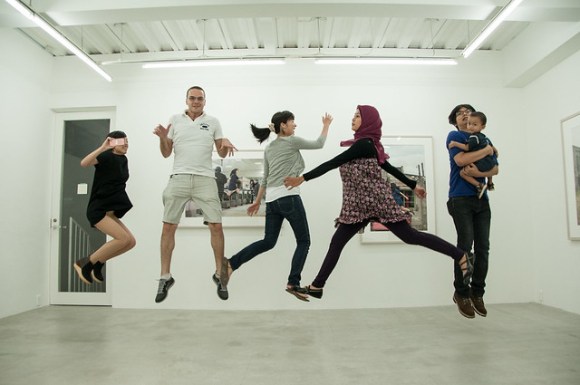I found this chalk art made by Japanese high school students impressive. Some of these drawings are now very popular in 2ch (Japanese forum) and around Twitter.










Source: Kotaku.com
I found this chalk art made by Japanese high school students impressive. Some of these drawings are now very popular in 2ch (Japanese forum) and around Twitter.










Source: Kotaku.com
At the end of the 12th century, the imperial family lost their military control over Japan. After several years of civil wars between the Minamoto (Genji) and Taira (Heike) clans, Minamoto no Yoritomo defeated the Taira clan. He rose to power as the shogun (military dictator) taking control all over Japan, establishing the capital in Kamakura and starting a new era known as the Kamakura Shogunate. This was the start of the aristocracy decline, which would maintain the imperial court in a secondary role during almost seven centuries until the Meiji restoration.
Kamakura, surrounded by sea and mountains, is a natural fortress. A city that you can only reach using Seven Passes. The strategic location helped to protect the city and maintain the military control over Japan during more than one century.
Last July we decided to go around the city along the mountain range that connects Kita Kamakura with the north of the bay. We set out from Kita Kamakura station and went into the forest at the point where Jochi-ji temple is located. Jochi-ji temple is one of the main Buddhist temples of the city.

Hidden in the Jochi-ji temple we found a statue of Hotei, the god of happiness, one of the seven gods of fortune. According to popular belief rubbing Hotei’s belly will bring wealth, good luck and prosperity. That’s why you can see his belly is so well polished on the photo below.


A tanuki family!
We had just immersed ourselves into the forest and soon we bumped into another temple, the Zenirai Benzaiten, founded by Minamoto no Yorimoto not long after he took control over Japan. Legend has it that Minamoto dreamed with a kami that pointed him to the exact spot where he had to build the temple: “over there in the mountains in the northeast where miraculous water springs”. After exploring the mountains that surround Kamakura, Minamoto found the water spring and started to build this temple, which mixes characteristics of Buddhist temples and Shintoist shrines.




During our hike we found several areas with bushes of ajisai (hortensias) that looked really beautiful. Ajisai blossom in the raining season bringing great colors to the start of the Summer.

We ended our hike in the Daibutsu in Kamakura, one of the most visited Buddha statues in Japan. Minamoto no Yorimoto, after taking control over Japan, attended the inauguration of the Daibutsu of Todai-ji in Nara, he was so impressed that he decided that he had to build a similar or better one in Kamakura to show his power to everybody. Unfortunately he died four years after becoming shogun and he was never able to see his dream come true.
Around 50 years after his death, the Kamakura statue was inaugurated (first made of wood and afterwards rebuilt in bronze). After almost eight centuries, it is still here, imperturbable, staring at the sea after having weathered the effects of several tsunamis and earthquakes.

How to do the same hike: from Kita Kamakura station walk until Jochi-ji temple. It’s located 500 meters walking along the road that goes to Kamakura. From Jochi-ji temple you just have to follow the hiking trail that starts in the path that borders the temple. After around two hours walking slowly you will get to the Buddha statue.
Last year we had the opportunity to visit a small photography exhibition by Natsumi Hayashi, a Japanese girl that takes photos of herself levitating. Her photos are great, she uses different techniques to be able to achieve such a credible levitating effect. While on the exhibition we tried to imitate her style just by doing simple jumps. The most difficult thing is the jump timing.
This was the result of the photos that we took during the exhibition:

This one was the most difficult to get. To make everybody jump at the same time and take the photo in the exact moment was not easy at all.
You can see her photos at her website Yowayowacamera.com.